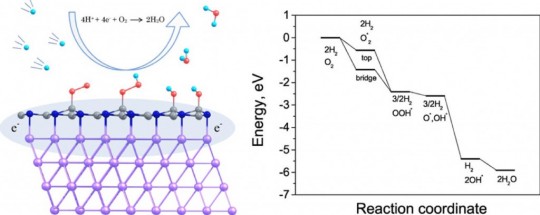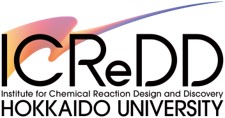Theoretical design of effective catalysts based on abundant elements for sustainable energy generation. Pt-free catalysts for fuel cell technology.
Development of effective and environment friendly catalysts based on abundant elements for energy and environment related applications is emerging task. We are keen to study how to functionalize abundant catalytically inactive or even completely inert nanomaterials and control their catalytic properties (activity, selectivity) via support design and morphology. The exciting example demonstrating credibility of the proposed approach is our recent progress on theoretical prediction of functionalization of the hexagonal boron nitride (h-BN) based nanomaterials for the oxygen reduction reaction (ORR). We have demonstrated absolutely novel and fascinating effect: an inert h-BN monolayer can be functionalized by the nitrogen doping or by the metal support and become catalytically active for ORR. The Ni(111) support can critically change the chemical and physical properties of defect-free monolayer h-BN, considerably promoting the adsorption of ORR intermediates, and therefore, h-BN/Ni(111) system can be catalytically active for the ORR. Our calculations demonstrate principal ability to functionalize inert materials for the ORR and open new ways to design effective precious metal free catalysts based on materials never been considered as catalysts before.
Relevant publications
- A. Lyalin, A. Nakayama, K. Uosaki, and T. Taketsugu, Adsorption and catalytic activation of the molecular oxygen on the metal supported h-BN, accepted, Topics in Catalysis, (2014).
- A. Lyalin, A. Nakayama, K. Uosaki, and T. Taketsugu, Functionalization of monolayer h‑BN by a metal support for the oxygen reduction reaction, J. Phys. Chem. C 117, 21359-21370 (2013).
- A. Lyalin, A. Nakayama, K. Uosaki, and T. Taketsugu, Theoretical predictions for hexagonal BN based nanomaterials as electrocatalysts for the oxygen reduction reaction, Phys. Chem. Chem. Phys. 15, 2809–2820 (2013).




